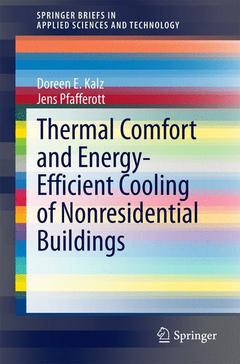Description
Thermal Comfort and Energy-Efficient Cooling of Nonresidential Buildings, 2014
SpringerBriefs in Applied Sciences and Technology Series
Authors: Kalz Doreen E., Pfafferott Jens
Language: English
Subjects for Thermal Comfort and Energy-Efficient Cooling of...:
52.74 €
In Print (Delivery period: 15 days).
Add to cart128 p. · 15.5x23.5 cm · Paperback
Description
/li>Contents
/li>Biography
/li>Comment
/li>
1 HOW TO READ THIS GUIDEBOOK.- 2 IMPACT OF COOLING ON ENERGY USE.- 3 THERMAL INDOOR ENVIRONMENT.- 4 STANDARDS ON THERMAL COMFORT.- 5 USER SATISFACTION WITH THERMAL COMFORT IN OFFICE BUILDINGS.- 6 METHODOLOGY FOR THE EVALUATION OF THERMAL COMFORT IN OFFICE BUILDINGS.- 7 THERMAL‐COMFORT EVALUATION OF OFFICE BUILDINGS IN EUROPE.- 8 APPLICATION OF COOLING CONCEPTS TO EUROPEAN OFFICE BUILDINGS.-
9 THERMAL COMFORT AND ENERGY‐EFFICIENT COOLING.



